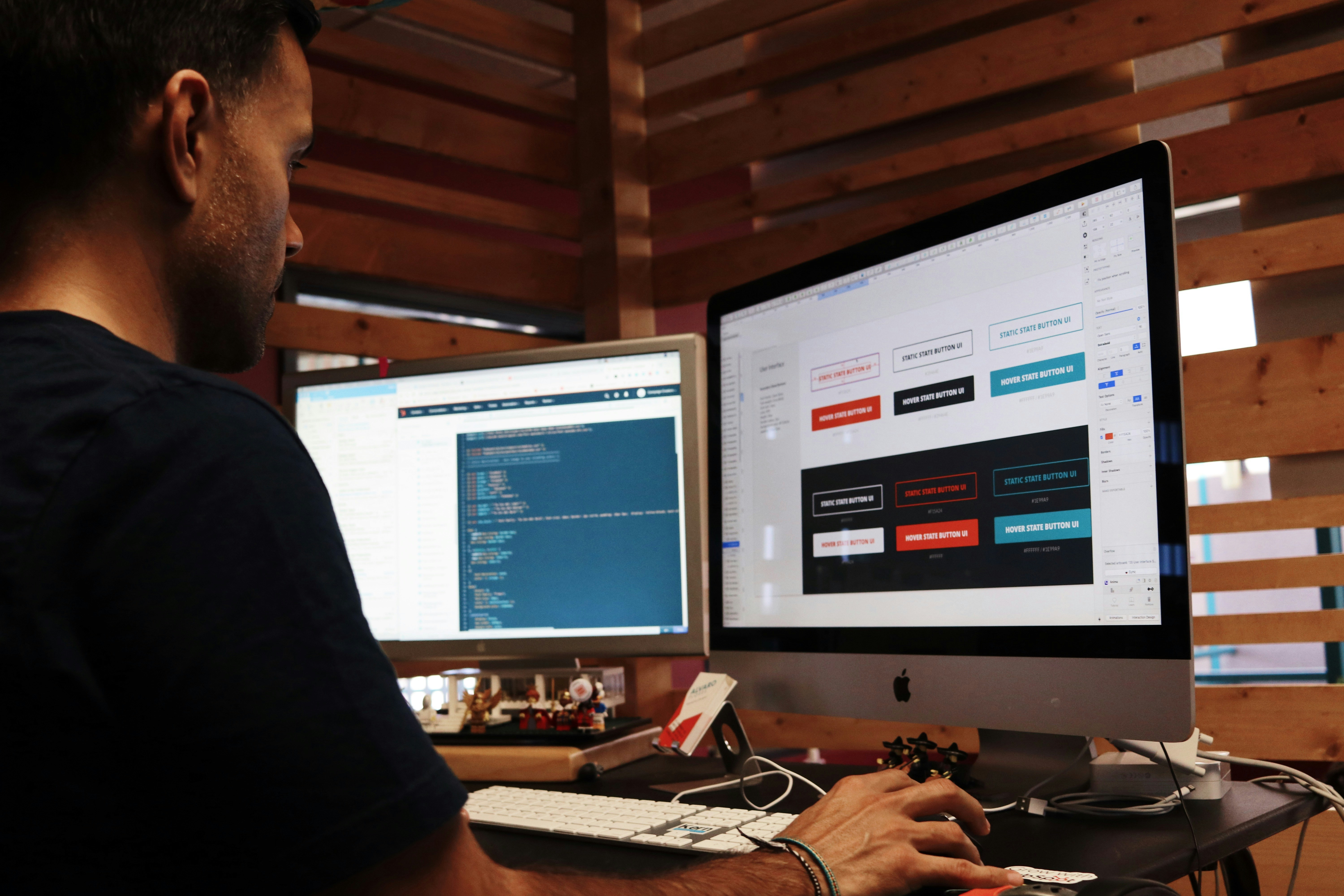Choosing the right e-commerce web design services can feel overwhelming. With so many providers available, how can a business owner identify the best fit? This article highlights key factors, including how to evaluate a provider’s experience, assess their design and user experience approach, and examine ongoing support options. By engaging with this content, businesses will better understand how to select a web design partner who aligns with their goals and enhances their online presence, solving the challenge of making an informed choice in a competitive market.
Key Takeaways
- Defining clear business goals is essential when selecting e-commerce web design services
- Understanding the target audience guides providers to enhance customer experiences effectively
- Evaluating security protocols protects sensitive information and builds consumer trust
- Assessing ongoing support options ensures businesses receive timely assistance for their evolving needs
- Reviewing pricing structures helps avoid unexpected costs and aligns with budget expectations
Identify Your Business Goals and Objectives

Establishing clear business goals and objectives is vital when comparing e-commerce web design services. It begins with defining the target audience, followed by identifying desired features and functionality that enhance usability. Setting a budget, determining project timelines, and assessing the brand’s unique identity all contribute to an effective plan. These factors not only support innovation but also ensure reliable customer service and backup strategies for ongoing energy in the online market.
Define Your Target Audience
Defining the target audience is essential for organizations when comparing e-commerce web design services. Understanding the needs and behaviors of potential customers can guide the selection of a service provider that excels in features supporting mobile commerce and enhances customer satisfaction. This approach not only minimizes vulnerability in meeting market demands but also helps tailor the website’s functionality to resonate with users, ensuring that it effectively converts visitors into loyal buyers.
Establish Desired Features and Functionality
When establishing desired features and functionality for e-commerce websites, businesses should consider the software framework that supports the site’s operations. For example, a robust platform will enhance the user experience, especially in industries such as electronics where customers seek detailed product information and engaging visuals. Choosing the right hosting plans also plays a crucial role, as reliable hosting ensures fast loading times and better performance on search engines, ultimately influencing potential buyers within the ecosystem.
Set a Budget for Web Design Services
Setting a budget for web design services is a critical step for businesses looking to thrive online. Organizations should assess costs associated with software as a service option, WordPress hosting, and compliance with consumer protection standards, particularly for those operating within the European Union. By clearly defining financial limits, businesses can focus on providers that offer the best value while ensuring their e-commerce platform meets both online and offline needs effectively.
Determine Project Timeline and Milestones
Determining a clear project timeline and establishing milestones are essential steps in selecting e-commerce web design services. A well-defined schedule allows businesses to track progress, ensuring their e-commerce solution, such as WooCommerce integrations, are delivered on time and operate smoothly within the retail environment. Additionally, incorporating milestones helps identify key phases of the project, allowing for timely assessments and adjustments, especially regarding security measures like malware protection and the implementation of a content delivery network.
Assess Your Brand’s Unique Identity
Assessing a brand’s unique identity is crucial when selecting e-commerce web design services. A clear understanding of brand values, mission, and target demographics helps businesses present themselves effectively in the vast world wide web. Utilizing platforms like Google Cloud Platform can minimize downtime while implementing software development strategies that align with brand identity, enhance the overall user experience, and boost algorithm ranking on search engines.
Evaluate Provider Experience and Expertise

When comparing e-commerce web design services, it is essential to evaluate provider experience and expertise. Reviewing a provider’s portfolio and case studies reveals their capabilities in areas like social commerce and the software development process. Checking client testimonials offers insight into their communication practices while assessing technical skills and industry-specific knowledge, which ensures they can meet unique needs in web development.
Review Provider Portfolio and Case Studies
Reviewing a provider’s portfolio and case studies is crucial in understanding their capabilities and expertise in e-commerce web design. This evaluation helps businesses gauge how well the provider has handled projects that include essential features like automation and chatbot integration, which can enhance user experience and streamline operations. Furthermore, examining their previous work can provide insights into pricing structures and how they align with the brand’s goals, ensuring a suitable fit for the company’s needs:
- Assess the diversity of projects in the provider’s portfolio.
- Check for successful case studies that highlight expertise in sectors relevant to your business.
- Evaluate client feedback to understand their experiences with the provider.
- Review integration of modern technologies like chatbots and automation in their work.
- Compare pricing and value offered relative to the services provided.
Assess Technical Skills and Capabilities
Assessing the technical skills and capabilities of an e-commerce web design provider is vital for businesses seeking to sell goods and services online. Experienced providers should demonstrate proficiency in programming languages such as PHP, which supports dynamic content management and enhances site functionality. Moreover, a solid understanding of cloud computing solutions can lead to more efficient deployment and maintenance, ensuring that users encounter minimal fees while navigating a high-performing e-commerce platform.
Check Client Testimonials and Reviews
Checking client testimonials and reviews is a vital step in evaluating e-commerce web design services. Feedback from past clients provides insight into how the provider handles projects, particularly regarding the effectiveness of their content management system. By understanding clients’ experiences with features that affect user behavior, businesses can make an informed choice that aligns with their brand goals and operational needs:
Determine Providers’ Communication Practices
Effective communication practices are a fundamental aspect businesses should evaluate when selecting e-commerce web design services. Providers that utilize tools like virtual machines and analytics can streamline interactions and enhance project management, ensuring a smooth workflow throughout the development process. For instance, hosting platforms such as Bluehost offer reliable support, helping businesses maintain their databases and supply chains efficiently, leading to timely updates and improved service delivery.
Analyze Design and User Experience Approach

Understanding responsive design is key to fostering a positive user experience. Providers should showcase effective user interface (UI) and user experience (UX) practices, ensuring visitors can navigate easily. Compliance with accessibility standards is essential for inclusivity, while customization and scalability options should meet growing business needs. Finally, evaluating site load speed and performance, including features like free site migration and document automation, enhances search engine optimization and overall user satisfaction.
Understand the Importance of Responsive Design
Responsive design is essential for e-commerce websites as it ensures a seamless experience across various devices, significantly enhancing user engagement. With consumers increasingly transitioning from brick-and-mortar to online shopping, a site that adapts to mobile phones, tablets, and desktops is critical for meeting customer expectations. Utilizing appropriate programming languages along with adherence to network security measures is vital for maintaining compliance with regulations and fostering trust, ultimately guiding effective pricing strategies that attract diverse audiences.
Review User Interface (UI) and User Experience (UX) Practices
When reviewing User Interface (UI) and User Experience (UX) practices in e-commerce web design, businesses must consider how well the website builder accommodates features that enhance consumer interaction. An effective design should streamline the shopping journey from point of sale to distribution, making it easy for users to navigate and find products. Integrating tools like virtual assistants can also improve customer engagement by providing immediate support, thereby addressing user queries and enhancing overall satisfaction.
Consider Accessibility Standards Compliance
Ensuring compliance with accessibility standards is vital for e-commerce websites that aim to meet diverse customer needs. This involves creating a site that can be easily navigated by everyone, including individuals with disabilities. Improving accessibility not only meets legal demands but also enhances user experience by increasing efficiency and lowering bandwidth usage when properly optimized.
Assess Customization and Scalability Options
Assessing customization and scalability options is crucial for businesses when comparing e-commerce web design services. A tailored platform allows organizations to adapt features according to their unique needs, whether it’s refining logistics processes or enhancing email marketing strategies. Moreover, choosing a provider that understands relevant laws and compliance requirements ensures that the website can grow seamlessly without legal issues, giving businesses the flexibility to expand their online presence effectively.
Evaluate Site Load Speed and Performance
Evaluating site load speed and performance is critical for e-commerce success, as slow websites can lead to frustrated customers and lost revenue. A reliable infrastructure ensures quick page loading times, which improves user experience and directly impacts conversion rates. Providers should offer robust customer support to address any potential performance issues promptly, ensuring that sites remain responsive and efficient, thereby protecting valuable intellectual property.
- Importance of infrastructure in site performance
- Impact on revenue due to loading times
- Customer support’s role in maintaining efficiency
- Protection of intellectual property through reliable service
Examine Technological Compatibility

Investigating the content management systems (CMS) used by providers is essential for ensuring smooth site operations. Evaluating e-commerce platform integrations alongside SEO readiness helps businesses achieve better visibility online. Reviewing security protocols and data protection measures safeguards sensitive information while understanding API availability is vital for future expansions. Exploring options like MySQL and Google Cloud can enhance site performance and ownership flexibility.
Investigate Content Management Systems (CMS) Used
When evaluating e-commerce web design services, investigating the content management systems (CMS) used by providers is essential for aligning with the business model and goals. A robust CMS allows businesses to efficiently manage products, update content, and implement policies that enhance user experience. Selecting a platform that offers dedicated hosting can significantly boost performance, ensuring seamless operations and a positive experience for customers, helping to attract and retain consumers effectively.
Evaluate E-Commerce Platform Integrations
Evaluating e-commerce platform integrations is essential for businesses aiming to enhance their online presence. Effective integration with various social media platforms enables seamless promotion and reach to a broader audience, aligning with recent research by the European Commission on global sales trends. Furthermore, selecting a web design service that offers VPS or dedicated hosting options ensures improved performance, which is crucial for maintaining a responsive and user-friendly site as the business scales.
Check for SEO Readiness and Best Practices
When assessing e-commerce web design services, checking for SEO readiness and best practices is crucial. This involves ensuring that the provider’s platform is optimized for emerging technologies, allowing the website to remain relevant in a changing digital landscape. Compliance with current legislation is another important parameter; failures in this area can affect supply chain management and overall return on investment. A design that incorporates SEO strategies right from the start can enhance visibility and drive more traffic, directly addressing the need for businesses to attract and retain customers in a competitive market.
Review Security Protocols and Data Protection Measures
Reviewing security protocols and data protection measures is essential when evaluating e-commerce web design services. A reputable web hosting provider should implement advanced security features, such as SSL certificates and firewalls, to protect sensitive information like credit card data from breaches. According to a recent statistic, over 80% of consumers are concerned about sharing personal data online, making it vital for businesses to choose a provider that prioritizes the safety of their customer’s information and is compliant with regulations.
- Understand the importance of security protocols in web design.
- Ensure the web hosting provider implements SSL certificates and firewalls.
- Consider customer concerns regarding data protection and trust.
- Evaluate compliance with relevant data protection laws.
Conclusion
Evaluating key factors when comparing e-commerce web design services is essential for businesses looking to thrive online. By focusing on aspects such as provider experience, desired features, and cost structures, organizations can make informed decisions that align with their goals. Understanding these elements not only enhances user experience but also boosts online visibility and customer engagement. Prioritizing these considerations ensures that businesses choose a service suitable for their evolving needs, leading to long-term success in the digital marketplace.
